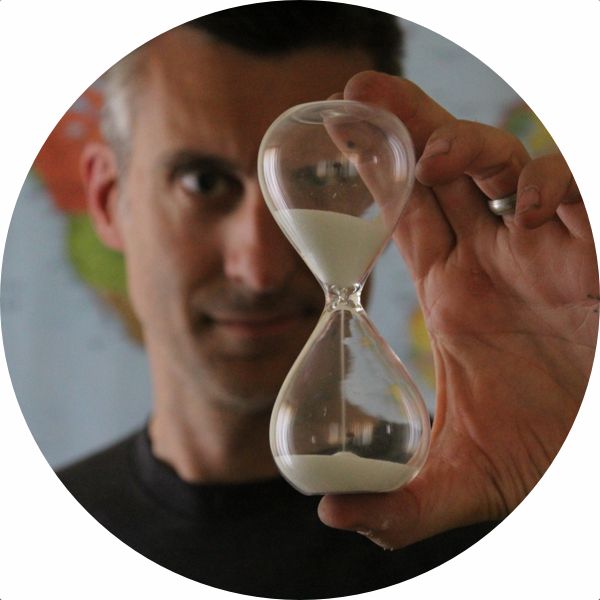Saturday, 04-04-2014 & Sunday, 05-04-2015.
Days 227 & 228.
Now that the big parades of Semana Santa were over and we still had two more days to relax in Granada, it was finally time to move our car to a closer parking facility. But even though the real festive parades were behind us, it was still the Saturday before Easter.
So we thought we’d walk by to see if there were any available spots, just in case. And, since the parking facility closest to our hotel was also near the Cathedral of Granada, naturally it was already full. So we decided to just leave the car where it was and, since we were right next door, check out the cathedral.
Cathedral of Granada
This grand cathedral is built on the site of the city’s former grand mosque, and construction began in the early 1500s — almost right after the defeat of the Moors. They say it was modeled after the cathedral in Toledo, and it has elements of Gothic architecture, but it also shows Moorish and Spanish Renaissance influences in its design.
As we walked around the cathedral, we were hit up by more rosemary-wielding gypsy ladies and there were plenty of sidewalk vendors selling cheap sunglasses, rosaries, and other touristy fare. There were also a number of gents who would write your name in Arabic on a piece of paper for 3€.
As we walked by one of the entrances, there was a long queue building up for a look inside. We thought about going in for a tour, but there was an entrance fee. Every time we consider going to a place with an entrance fee that we haven't already accounted for, we make a quick budget check. Our hotel room was right at the upper end of our budget range, and that left us feeling a little cash poor, so we didn't go inside.
This meant we missed out on seeing the tombs of Ferdinand and Isabella (Los Reyes Católicos) and their daughter, Joanna (known as the Crazy or the Mad), and her husband, Felipe I (the Handsome), whom we’d learned about in Madrid.
Instead, we meandered back to the Albayzín district where we were staying. And here we should mention that while the Alhambra is the big draw in Granada, the whole Albayzín, which intersects the small, picturesque Darro River, is part of the same UNESCO World Heritage site (Alhambra, Generalife, and Albayzín) and worth a visit.
Church of Santa Ana
Right near the Darro River, at the gateway from the Santa Ana Plaza to the Carrera del Darro, one can find the Church of Santa Ana.
Located on the site of mosque of Almanzra, this church was first built in the 16th century and is notable for being one of the best examples of the Mudejar art style (which is southern Iberian Moorish design) in Granada. The night before, a seemingly endless stream of penitentes marched down the steps of the church and took to the streets, but this time it was pretty quiet.
Sephardic Museum
Right near our hotel, we stumbled upon a sign for the Sephardic Memorial Center, just up one of Granada's narrow streets. The museum is rumored to be in the home of a former Jewish landowner, but because the murky history of Jews in Spain, they can't be sure.
When we arrived to check the place out, they told us there was an English tour scheduled for 5:00 that evening. So we went back to the hotel to relax for a little while, then came back for the tour.
When we came back, a small group of us were given a tour through the small museum that covered the history and the contributions the Jewish people made to both Granada and to Spain.
The history of Jews in Spain is long and convoluted, and this tour gave us some deeper insight into the history of the Jewish people from their arrival in the Iberian peninsula and relatively peaceful existence through Roman rule.
The trouble really started when the Visigoths took over in the 5th and 6th centuries. One of the strongest Visigothic kings was Catholic, and he enacted restrictive laws, taxes, and forced conversions for Jews. Things got better when the Moors took over (the invasion against the Visigoths was aided from the inside by the Jewish community), and things went well for the Jewish people ... until Los Reyes Católicos took control of Granada (and thus all of Spain) from the Moors in 1492.
Shortly (as in about 30 days) after defeating the Moors, Ferdinand and Isabella issued the Alhambra Decree, an edict that gave all Jews three months to convert to Catholicism or leave Spain. Of course some left and some converted, but others stayed and only pretended to convert (and practiced what was known as crypto-Judaism) — and that's where the Spanish Inquisition came in.
There are a few artifacts on display from the era of crypto-Judaisim at the museum, including a torah, but historically, there really aren't all that many things left to find from the time after the Alhambra Decree.
During our tour, someone asked how many Jewish families were currently living in Granada. We sort of expected a round estimate, but the answer was quite specific — a resounding "five." There's no synagogue in Granada, so for services they go to nearby Málaga.
So for the last 500 years, the Jews in Spain have had it pretty rough. But these days, Spain is making amends. There is a bill passing through Spanish parliament that grants descendants of Spanish Jews who fled the inquisition the chance to apply for Spanish citizenship.
After we finished at the Sephardic Museum, we went out for some tapas with Lenny, Christina, and Anne, three people we'd met on the tour. Oh, and we found more nun cookies.

Tom Fassbender is a writer of things with a strong adventurous streak. He also drinks coffee.











